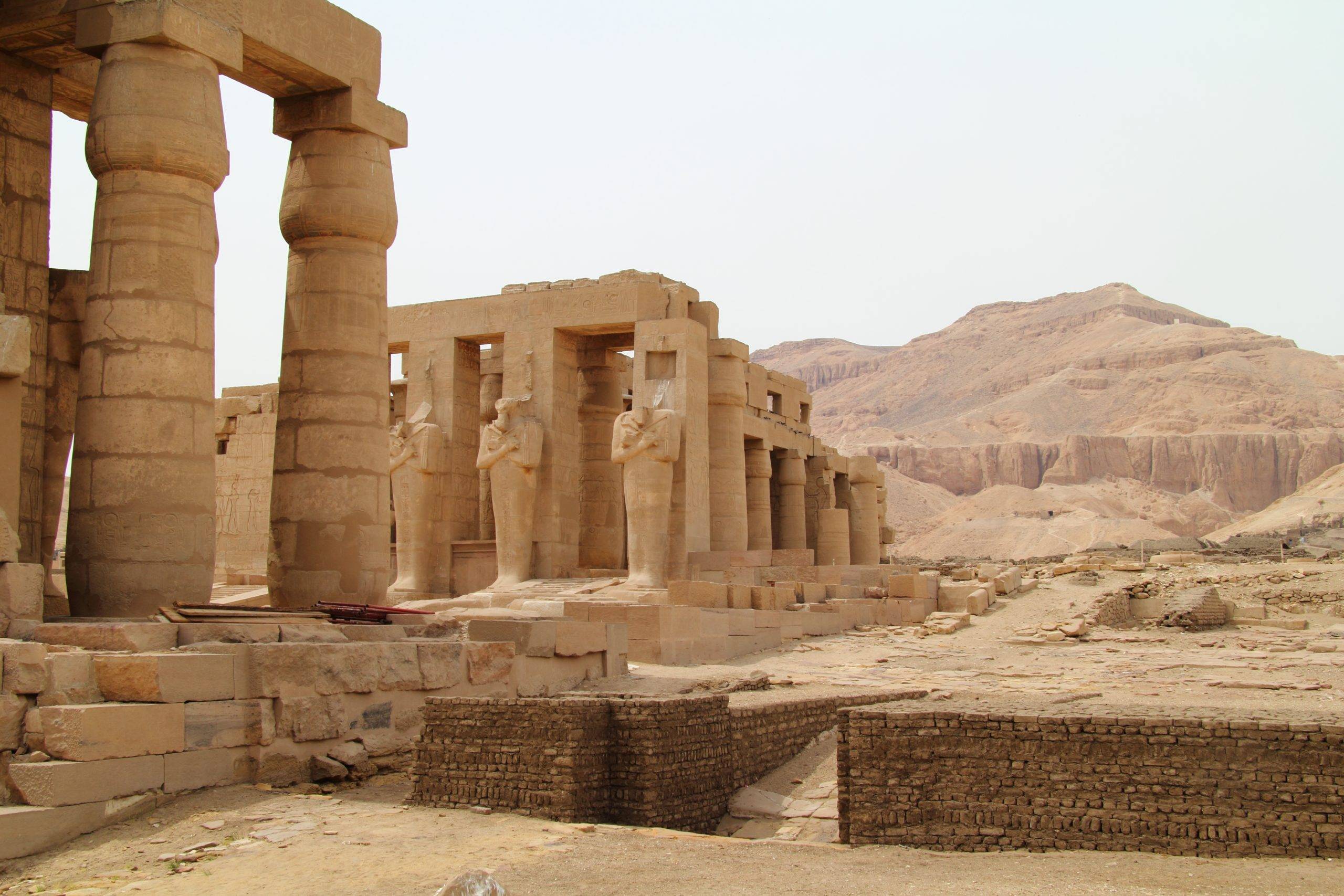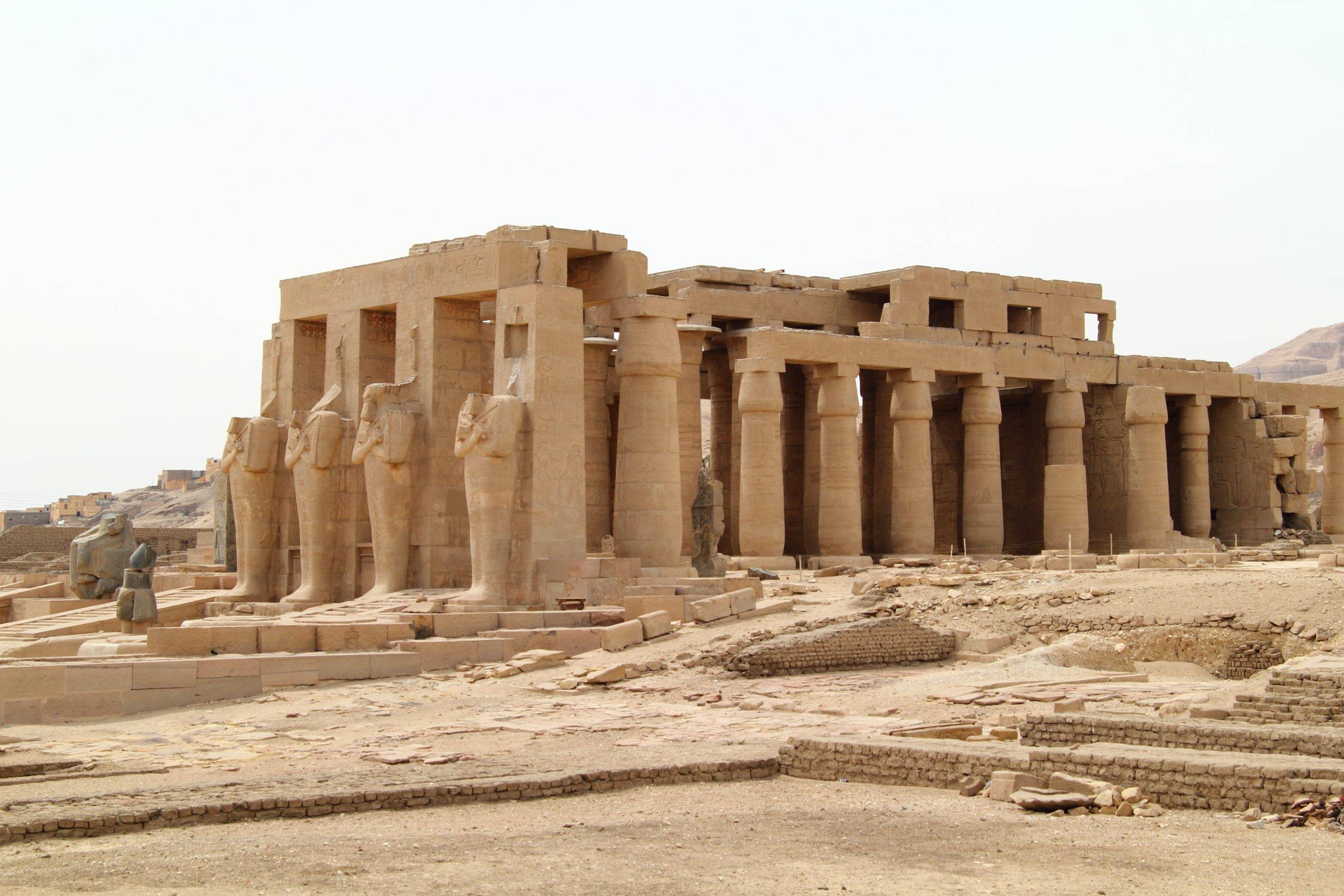Located on the west bank of the Nile, opposite the modern city of Luxor, Egypt, lies the Ramesseum, the mortuary temple of Pharaoh Ramesses II. This grandiose monument, with its colossal statues and intricate reliefs, is a testament to the power and ambition of one of Egypt’s most celebrated pharaohs. The name – Ramesseum (French form Rhamesséion) was given by Jean-François Champollion, who visited the ruins of the site in 1829 and first identified the hieroglyphs making up Ramesses’s names and titles on the walls. Ramesseum is a site that continues to captivate historians, archaeologists, and visitors alike.
Get your dose of History via Email
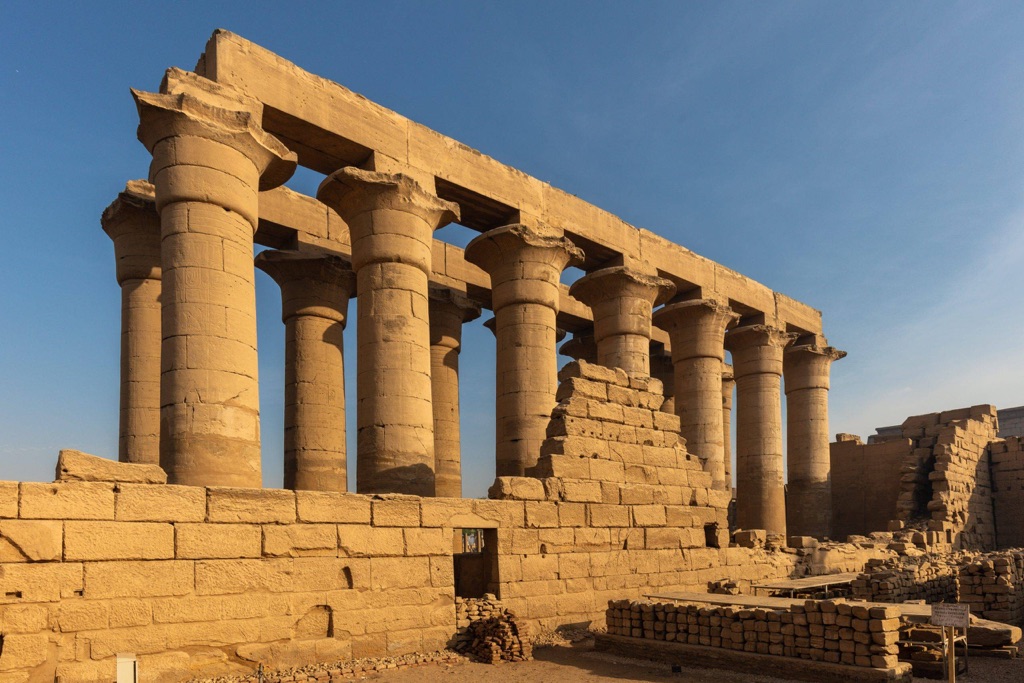
Historical Background
The Ramesseum was constructed during the reign of Ramesses II, who ruled Egypt for 66 years from 1279 to 1213 BC during the 19th Dynasty of the New Kingdom. Ramesses II, also known as Ramesses the Great, is often considered one of Egypt’s most effective pharaohs. His reign was marked by extensive building programs, military campaigns, and a focus on securing Egypt’s borders. The Ramesseum was one of his most ambitious projects, serving as both a place of worship and a monument to his reign.
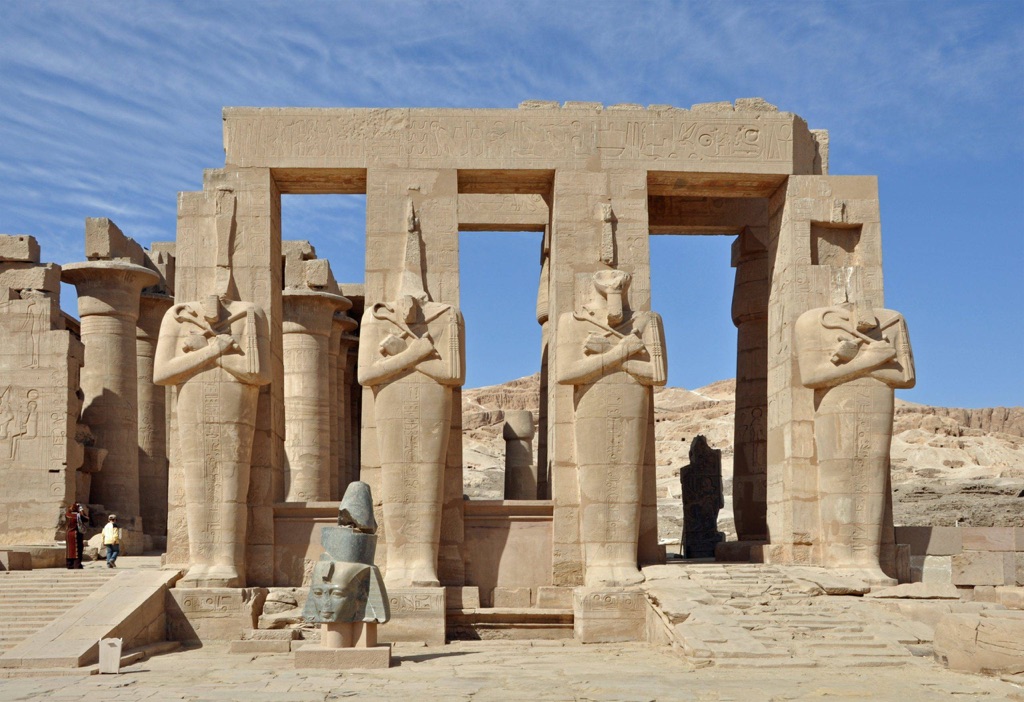
Architectural Highlights
The Ramesseum covers an area of approximately 10 acres and is composed of various stone types, including limestone and sandstone, which were transported from quarries across Egypt. The temple complex is divided into two main parts: the first courtyard and the second courtyard, each adorned with colossal statues of Ramesses II and intricate reliefs depicting his military victories and religious rituals.
The first courtyard is dominated by a colossal statue of Ramesses II, originally 57 feet tall, now lying in pieces. The second courtyard houses the Hypostyle Hall, a vast space filled with columns and decorated with scenes of Ramesses II’s military victories, particularly the Battle of Kadesh. Beyond the second courtyard lies the inner sanctum, a series of smaller rooms leading to the sanctuary, where the sacred barque of the god Amun was kept.

Theories and Interpretations
The Ramesseum, like many ancient Egyptian temples, was not just a place of worship but also a symbol of the pharaoh’s divine power. The grandeur of the architecture and the detailed reliefs were designed to impress and intimidate, reinforcing Ramesses II’s status as a god-king. The temple also served a practical purpose as a funerary temple, where rituals were performed for the pharaoh’s ka (spirit) in the afterlife.
The dating of the Ramesseum has been established through historical records and archaeological evidence, with radiocarbon dating methods confirming its construction during the reign of Ramesses II. The astronomical alignment of the temple, like many ancient Egyptian structures, is believed to have been carefully planned to coincide with significant celestial events, although the exact nature of these alignments is still a subject of research.
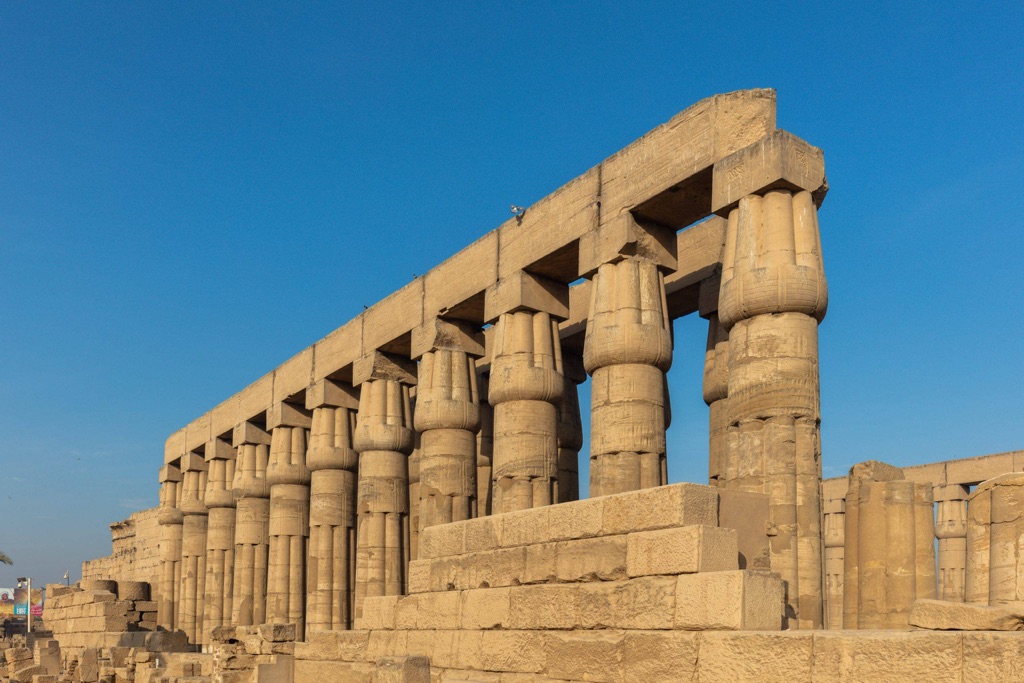
Good to know/Additional Information
The Ramesseum is also famous for its connection to literature. The fallen colossus in the first courtyard is believed to have inspired the poem “Ozymandias” by Percy Bysshe Shelley, a reflection on the impermanence of human achievements. The poem’s title, “Ozymandias,” is the Greek name for Ramesses II.
Despite centuries of weathering and human activity, the Ramesseum remains one of the most impressive sites in Egypt, a testament to the ambition and power of Ramesses II. Its study continues to provide valuable insights into ancient Egyptian architecture, religion, and royal propaganda.
